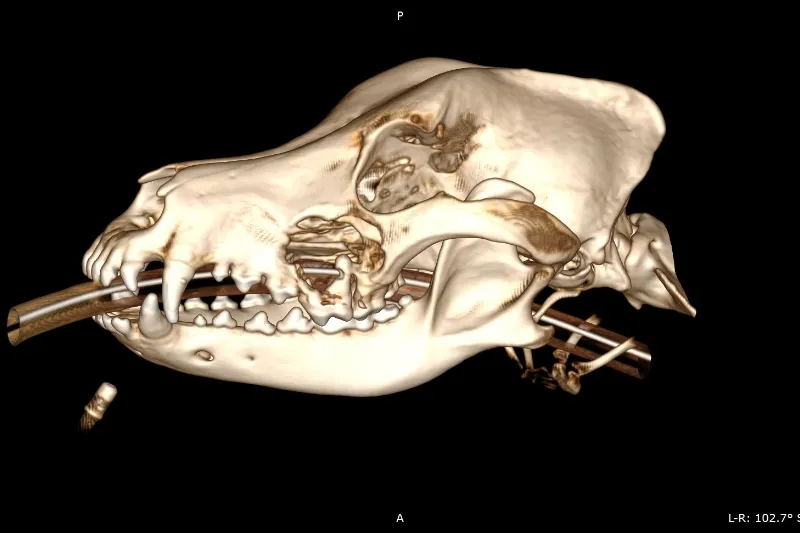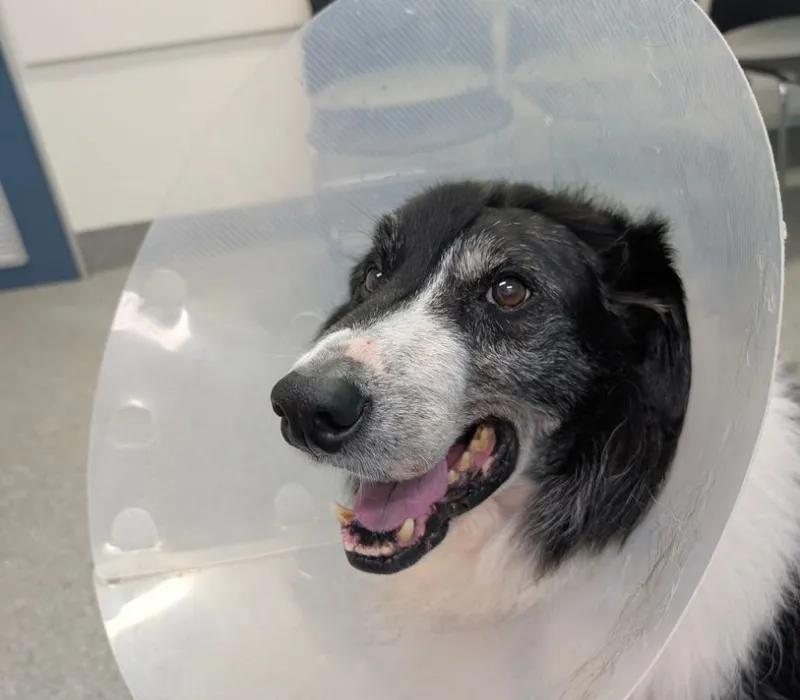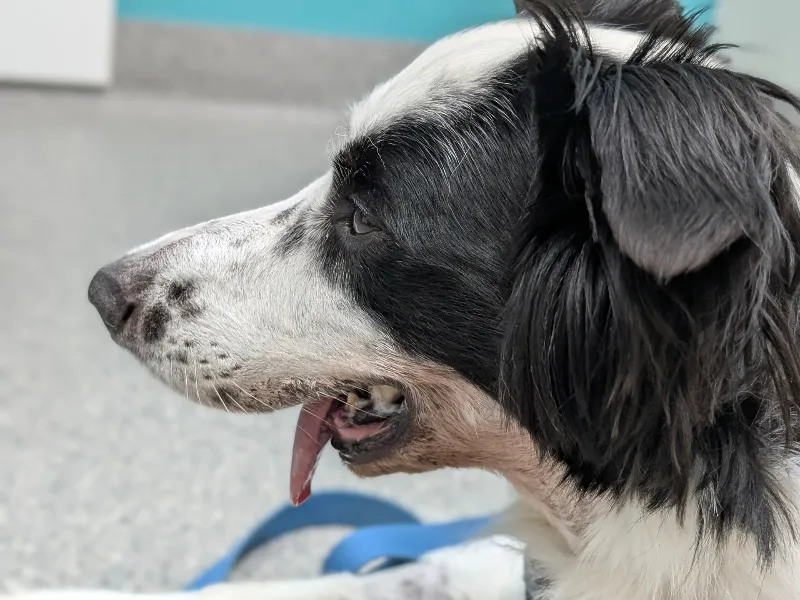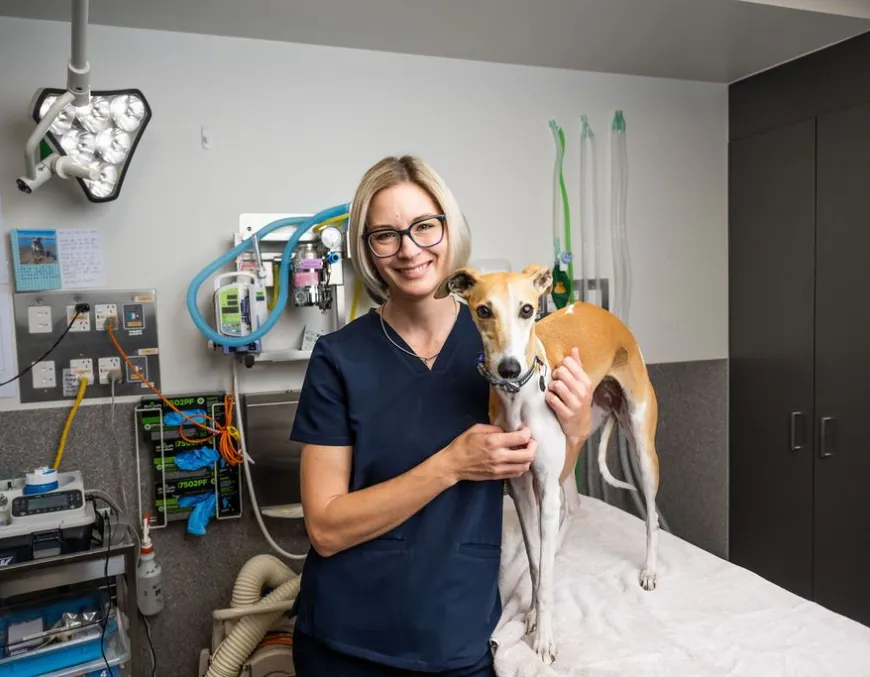Removing complex teeth safely and with minimal impact.

Some conditions speak louder than others, especially when they affect how an animal eats, moves or interacts. For owners who hear that their dog or cat requires maxillofacial or jaw surgery, it can be a confronting prognosis.
It may seem extreme, but it’s often the kindest and most effective solution for complex conditions. Veterinary dentists and oral surgeons will always take a holistic view when determining whether it’s necessary, and will plan a tailored approach for the procedure itself.
At Advanced Animal Dentistry, we perform specialist-level oral surgeries, including maxillofacial surgery, and have extensive experience across a wide range of case types. We only recommend this when it’s the best option for a pet’s long-term wellbeing and always ensure owners are supported with clear, compassionate communication.
“We only recommend surgery when it’s the best option for a pet’s long-term wellbeing and always ensure owners are supported with clear, compassionate communication.”
When jaw surgery is necessary and why AAD
When we talk about maxillofacial surgery, it’s usually because part of the jaw is extensively diseased or damaged. That might be due to trauma, congenital defects or tumour. We sometimes see dogs or cats with jaw fractures or extensive trauma requiring reconstructive procedures and fracture repair. Other pets present with oral tumours that are often expanding through tissue and bone, often requiring extensive surgery (maxillectomy or mandibulectomy). We also perform reconstructive procedures for congenital defects such as cleft palates.
Maxillofacial surgeries at AAD are a collaborative effort between Dr Bec Tucker and Dr Wendy Archipow, who was trained by a double-boarded veterinary dentist and surgeon and is extensively familiar with oral surgery. Having two experienced surgeons operating together allows these extensive procedures to be carried out more efficiently and with greater precision. It aids in access and visualisation of difficult-to-access areas and helps reduce time under anaesthesia, which is a real benefit for the animals.
They also bring a broader surgical mindset and shared expertise to these cases. Traditionally, an oral tumour may be removed, leaving tooth roots behind at the edge of the surgical site, which can result in ongoing concerns for the patient. We take a holistic approach to these procedures and don’t just deal with the immediate issue; we also consider and plan for how the procedure will affect the animal’s long-term oral health and comfort. Each procedure starts with a comprehensive planning process to ensure nothing is overlooked.
We also have access to advanced anaesthesia monitoring and specialised equipment, including a surgical unit designed to cut bone without harming soft tissue and a sterile handpiece that’s faster and less traumatic than traditional methods.
“Instead of just removing what’s necessary and closing up, our team considers how the procedure will affect the animal’s long-term oral health.”
Recovery and adapting post procedure
Following these often extensive surgeries, most patients recover more quickly than their owners anticipate. Many are relieved to see their dog or cat eating, sleeping and moving quite comfortably within days, sometimes even hours, of surgery.
Pain management and nutrition are carefully overseen during recovery. Feeding tubes are rarely needed, as most patients will eat soft food either immediately or within a day. Most of our patients are eating by the morning after surgery.
While the prospect of maxillofacial surgery can be confronting, recovery is often far less daunting than expected. If your pet requires surgery, you may be surprised by how well they cope both physically and emotionally.

Veterinary jaw surgery detailed with real cases and outcomes
Phoenix the Border Collie
Phoenix, an affectionate 11-year-old Border Collie, had been living with a fluid-filled swelling on the left side of his face for nearly two years. Early diagnostics pointed to a benign cyst, but when the swelling suddenly grew and changed in nature, he was referred for further investigation.
A CT scan and biopsy showed a large lesion involving the upper jaw and surrounding bone. Despite its size and proximity to his eye, the tumour looked relatively benign on imaging, though the biopsy results were inconclusive. Further sampling confirmed it was a spindle cell tumour, and surgery was recommended to remove the mass.
Phoenix’s procedure was complex. Drs Bec and Wendy removed a portion of his upper jaw, part of the bone supporting his eye, multiple teeth and tissue extending into the nasal cavity.
Despite the scale of the surgery, his appearance remained remarkably intact. Aside from a slight loss of movement in the upper lip and a less pronounced cheekbone on one side, he recovered beautifully and was soon back to his usual self.
Recently, Phoenix celebrated his 11th birthday and continues to do well, though he’s under active monitoring to watch for any signs of recurrence. The team has also adapted his care to support his needle phobia, which helps to reduce stress and make his visits more comfortable.
“We honestly can’t thank Dr Bec enough for all the amazing work she did with Phoenix — I bet he’s still the biggest needle-phobia patient she’s ever seen!” – Simone

Barkley the Border Collie
Barkley is a five-year-old Border Collie who was referred to us after a routine dental procedure revealed swelling on the front of his lower jaw. X-rays suggested it might be a tooth-related cyst, but its size and the way it crossed from one side of the jaw to the other made us suspicious it may be more serious.
A biopsy and CT confirmed the presence of an oral squamous cell carcinoma. Thankfully, there was no sign of the cancer spreading to his lymph nodes or other organs. Surgery was the best way to remove the tumour and restore Barkley’s quality of life.
The operation involved removing a large section of his lower jaw. He recovered well, managing food with a little help at first, and when a small wound breakdown occurred, it was repaired promptly, and he continued to improve.
Despite the extent of his surgery, Barkley adapted quickly. He’s now eating on his own again, back to swimming in the dam and loving car rides with his dad. His function and appearance are excellent, and his cheerful personality hasn’t changed one bit.
“Just six months down the track to what may sound like a radical surgery, and we couldn’t be more pleased or impressed!! He has adapted beautifully- apart from looking at him (and even then, it’s not always easy to tell), you wouldn’t know there was anything different about him. He is back to everything he loves; he eats and drinks like any other dog, plays with soft toys and will even have a go at a ball. We are so grateful for the surgery and feel so incredibly lucky to have the best care and team in Dr Bec, Hayley and Nurse Sarah. Thank you.” – Nikki
“These procedures offer real relief and a genuine chance for animals to live happy, pain-free lives.”
Real care, real results
As the case studies demonstrate, when approached with skill, planning and a broader view of the patient’s needs, extensive oral surgery can deliver strong functional outcomes without significantly impacting appearance. These procedures offer real relief and a genuine chance for animals to live happy, pain-free lives.
If your pet has been referred for maxillofacial surgery at Advanced Animal Dentistry, you can feel confident they’ll be well looked after. We bring extensive experience to every case and make sure you’re informed and supported throughout.
If you’re concerned about your pet’s dental or oral health, book an oral health check with our team today using our contact form. We’ll work closely with your primary vet so your pet receives consistent, well-coordinated care.
You can also visit our pet owners’ page to explore more resources.














